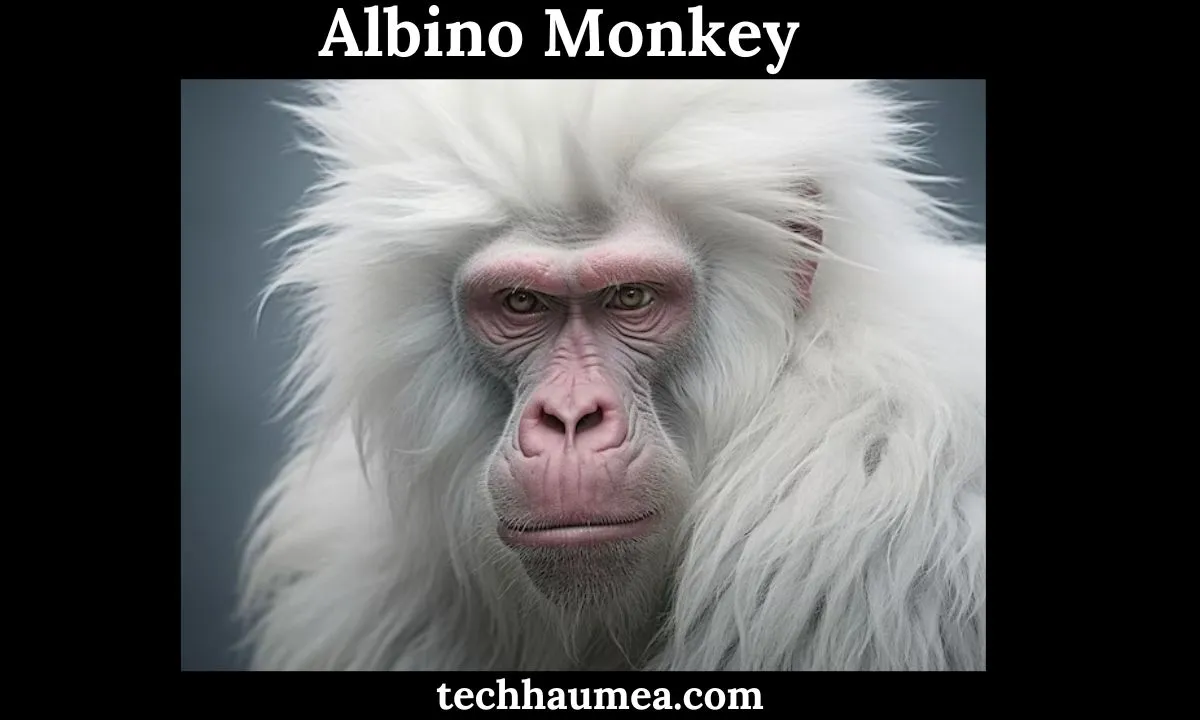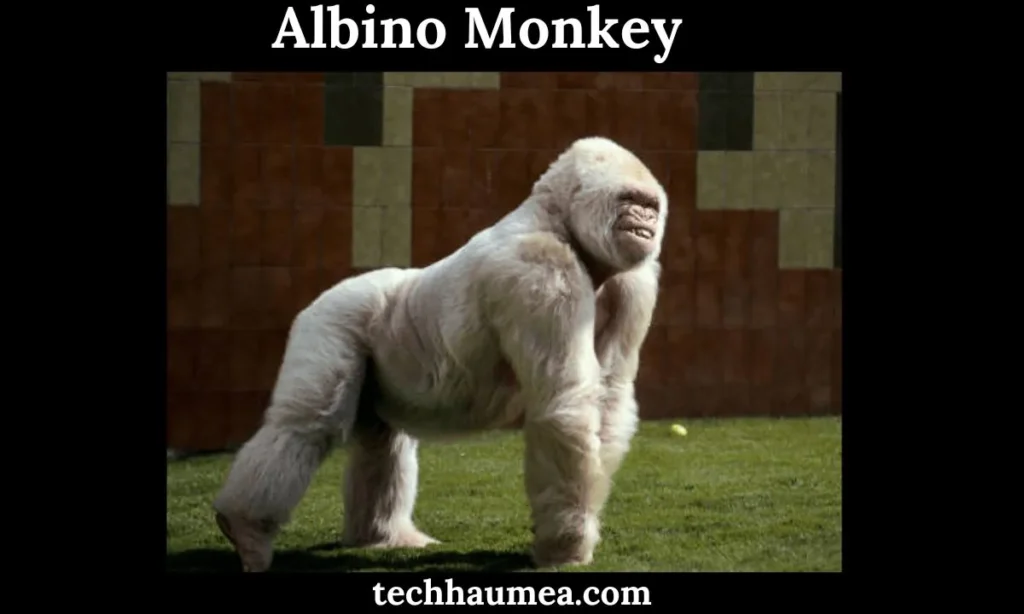Albino Monkey: An Extraordinary Creature

Albino monkeys are a rare sight in the animal kingdom. They are unique due to their distinct lack of pigmentation which sets them apart from their counterparts. This condition, known as albinism, results in a white or pale appearance, along with other physiological effects.
What is Albinism?
Albinism is a genetic condition characterized by the absence of melanin, the pigment responsible for coloring the skin, hair, and eyes. This condition affects various species, including humans, reptiles, birds, and mammals like monkeys.
Causes of Albinism
- Genetic Mutation: Albinism is caused by a mutation in one of several genes responsible for melanin production.
- Inheritance: It is typically inherited in an autosomal recessive pattern, meaning both parents must carry the gene.
Physical Characteristics of Albino Monkeys
Albino monkeys exhibit several distinct physical traits:
- White or Pale Fur: The most notable feature is their lack of fur pigmentation.
- Light Eyes: Their eyes often appear pink or light blue due to the absence of melanin.
- Sensitive Skin: Without melanin, their skin is more susceptible to sunburn and other environmental factors.
Detailed Look at Physical Traits
Albino monkeys are easily distinguished from other monkeys due to their unique physical characteristics. The lack of pigmentation in their fur makes it appear white or very light. This absence of melanin affects not only their fur but also their skin and eyes. The light color of their eyes, often pink or light blue, is another telltale sign of albinism. This can sometimes give them a ghostly appearance that stands out sharply against the natural backgrounds of their habitats.
Behavior and Adaptations
Albino monkeys may exhibit different behaviors compared to their pigmented counterparts. These behaviors are adaptations to cope with their unique physical challenges.
Visual Challenges
- Light Sensitivity: Albino monkeys are more sensitive to light, which can affect their vision.
- Navigational Skills: They may rely more on other senses, such as hearing and smell, to navigate their environment.
Social Interaction
- Group Dynamics: Their unique appearance can affect their social standing within groups, sometimes leading to isolation or special treatment.
Habitat and Distribution
Albino monkeys can be found in various regions, depending on the species. However, their rarity makes them less commonly observed.
Common Habitats
- Tropical Rainforests: Many albino monkeys are found in dense forests where they can find shelter from the sun.
- Protected Areas: They are often spotted in wildlife reserves and sanctuaries where they are protected from predators and human threats.
Specific Regions
Albino monkeys have been documented in various parts of the world. For instance, albino capuchin monkeys are found in Central and South America, while albino macaques are sometimes seen in parts of Asia. The specific habitat depends largely on the species of the monkey and the geographical location they inhabit.
Conservation Status
The conservation status of albino monkeys varies depending on the species. Generally, they face greater risks due to their visibility to predators and susceptibility to diseases.
Threats to Survival
- Predation: Their lack of camouflage makes them easy targets.
- Health Issues: They are prone to skin conditions and vision problems.
- Human Activities: Habitat destruction and illegal pet trade pose significant threats.
Efforts to Protect Albino Monkeys
Several wildlife organizations are dedicated to the protection of albino monkeys. These efforts include habitat preservation, legal protection from poaching, and public education about the importance of these unique animals.
Comparison of Albino and Pigmented Monkeys
| Feature | Albino Monkeys | Pigmented Monkeys |
| Fur Color | White or Pale | Varied (brown, black, etc.) |
| Eye Color | Pink or Light Blue | Dark (brown, black) |
| Skin Sensitivity | High | Normal |
| Visual Challenges | Light Sensitivity | Normal Vision |
| Predation Risk | High | Normal |

Fascinating Facts about Albino Monkeys
Here are some intriguing facts about albino monkeys:
- Rare Occurrence: Albinism occurs in approximately 1 in 20,000 births across various species.
- Symbol of Good Luck: In some cultures, albino animals, including monkeys, are considered symbols of good luck.
- Conservation Efforts: Many wildlife organizations are working to protect albino monkeys and their habitats.
Unique Adaptations
Albino monkeys have adapted in remarkable ways to survive in their environments. For example, their heightened sensitivity to light means they often avoid open, sunny areas during the peak daylight hours, preferring shaded and forested areas instead.
Importance of Conservation
Conserving albino monkeys is crucial not only for their survival but also for the health of their ecosystems. These monkeys play significant roles in their environments, such as seed dispersal and maintaining the balance of their ecological communities.
Benefits of Conservation
- Biodiversity: Protecting albino monkeys helps preserve biodiversity.
- Ecological Balance: They contribute to the health of their ecosystems.
- Scientific Research: Studying albino monkeys can provide insights into genetics and adaptation.
Also, Read Why ThisVid.cim is the Next Big Thing in Video Sharing Platforms
Challenges in Conservation
Conserving albino monkeys presents several challenges. Their unique appearance makes them targets for poaching, and their health issues require special attention.
Overcoming Challenges
- Education: Raising awareness about the importance of albino monkeys can help reduce poaching.
- Medical Care: Providing medical care for skin and vision problems is essential.
- Legal Protection: Enforcing laws against poaching and habitat destruction is crucial.
Table: Conservation Strategies for Albino Monkeys
| Strategy | Description |
| Habitat Preservation | Protecting natural habitats from deforestation and destruction |
| Legal Protection | Enforcing laws against poaching and illegal trade |
| Public Education | Raising awareness about the importance of albino monkeys |
| Medical Care | Providing treatment for health issues unique to albino monkeys |
Frequently Asked Questions
What causes albinism in monkeys?
Albinism is caused by a genetic mutation that affects melanin production, leading to a lack of pigmentation.
Are albino monkeys more prone to health issues?
Yes, albino monkeys are more susceptible to health problems such as skin conditions and vision impairments.
How rare are albino monkeys?
Albinism is a rare genetic condition, occurring in approximately 1 in 20,000 births.
Do albino monkeys face challenges in the wild?
Yes, they face challenges like higher predation risk and health issues due to their lack of pigmentation.
Can albino monkeys survive in the wild?
While they can survive, their unique physical traits make them more vulnerable, requiring special adaptations and sometimes human intervention.
How can we help protect albino monkeys?
Supporting conservation efforts, protecting their habitats, and raising awareness about their unique challenges are vital.
Do albino monkeys have any cultural significance?
In some cultures, albino animals are considered symbols of good luck and are revered.
Are there any famous albino monkeys?
There have been several notable albino monkeys documented in zoos and wildlife sanctuaries, often becoming symbols of conservation efforts.
Conclusion
Albino monkeys are extraordinary creatures that captivate the curiosity of many due to their unique appearance and the challenges they face. Understanding albinism in monkeys helps us appreciate the diversity and complexity of the animal kingdom. Conservation efforts are crucial to ensure these rare animals continue to thrive in their natural habitats.Albino monkeys are a testament to nature’s incredible diversity, reminding us of the importance of protecting all forms of life. Their unique adaptations and the efforts to conserve them highlight the delicate balance needed to sustain our planet’s biodiversity. Through education, legal protection, and dedicated conservation strategies, we can help ensure that albino monkeys continue to be a part of our world’s natural heritage.
Also, Read Tickzoo: The Ultimate Guide to Revolutionary Tech Solutions






